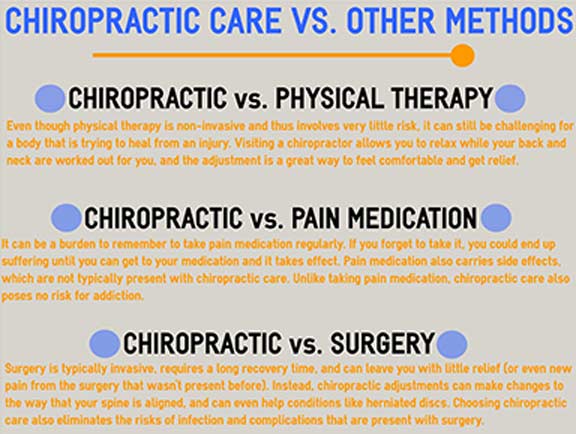A Beginner'S Guide To Comprehending Cervical Back Makeup And Its Effect On Neck Pain
A Beginner'S Guide To Comprehending Cervical Back Makeup And Its Effect On Neck Pain
Blog Article
Author-MacKay Link
As you sit there, possibly really feeling a twinge of pain in your neck, have you ever thought the intricate frameworks that compose your cervical spine? Understanding how the vertebrae, discs, and nerves communicate in this area can clarify why neck pain can be so persistent and devastating. By checking out the structures of cervical spinal column makeup and its implications for neck discomfort, you may reveal insights that can assist you much better handle or perhaps avoid those nagging pains and tightness.
Value of Cervical Spinal Column Anatomy
Recognizing the importance of cervical spine composition is critical in understanding the intricacies of neck pain. The cervical spine, composed of seven vertebrae, plays an important function in sustaining the head's weight and promoting motion. It houses the spine, which transmits messages in between the brain and the rest of the body. In addition, the cervical spinal column secures these delicate nerves and supplies structural security to the neck area.
Furthermore, the cervical spinal column allows for a variety of activity, allowing you to transform your head, turn it sideways, and nod backwards and forwards. Each vertebra has details functions and features that add to the total adaptability and stability of the neck. Comprehending the composition of the cervical back can aid you realize exactly how injuries or degenerative conditions in this area can bring about neck pain and associated signs and symptoms.
Components of the Cervical Spine
When discovering the elements of the cervical back, it becomes obvious that its framework consists of 7 vertebrae, labeled C1 to C7, piled on top of each other. https://www.semissourian.com/story/2868629.html are essential as they supply assistance to the head and allow for a variety of motion in the neck.
The upper vertebra, C1, additionally known as the atlas, sustains the head and allows the sluggish motion of the head. Straight under C1 is the C2 vertebra, called the axis, which enables the turning of the head back and forth.
Moving down the cervical spine, each vertebra plays a crucial role in preserving the spinal column's adaptability and stability. Between each vertebra are intervertebral discs that function as cushions, soaking up shock and protecting against the vertebrae from scrubing versus each other.
Recognizing the elements of the cervical back is important in comprehending exactly how the spine functions and its potential impact on neck discomfort.
Partnership In Between Spinal Column and Neck Discomfort
The connection between the spine and neck pain is a critical aspect of recognizing bone and joint pain. Your spine, specifically the cervical area, plays a substantial role in supporting your head and enabling numerous activities. When there's an issue in the back, such as a herniated disc or misalignment, it can directly impact the surrounding cells and nerves, resulting in neck pain. read here , injuries, and degenerative problems can all contribute to spine-related neck discomfort.
It's necessary to acknowledge that the spinal column and neck function as a cohesive unit. Any abnormalities or discrepancies in the spine can create strain on the neck muscles and ligaments, causing discomfort and stiffness.
Verdict
Since you have a basic understanding of cervical spinal column makeup and its link to neck discomfort, you can better value the intricacies of your own neck pain. Keep in mind, the health of your cervical spinal column plays a vital function in supporting your head and promoting motion, so it is essential to deal with it through proper pose, exercise, and routine exams with a medical care professional. Remain informed and aggressive about your back health to avoid and take care of neck discomfort properly.
